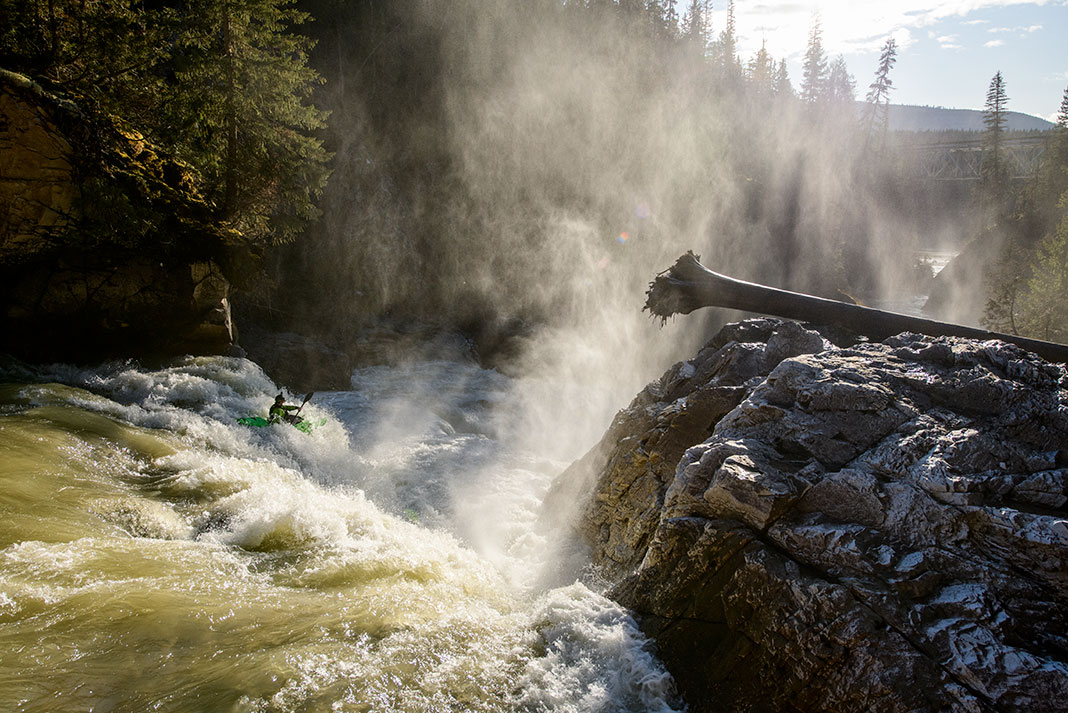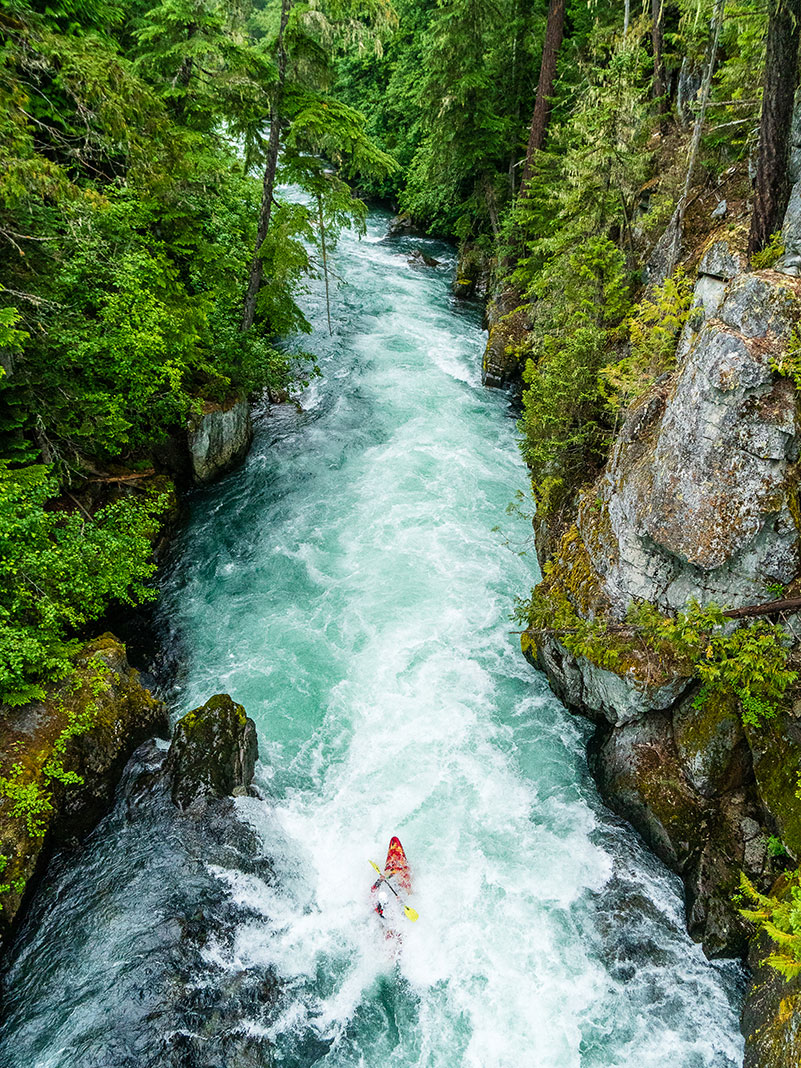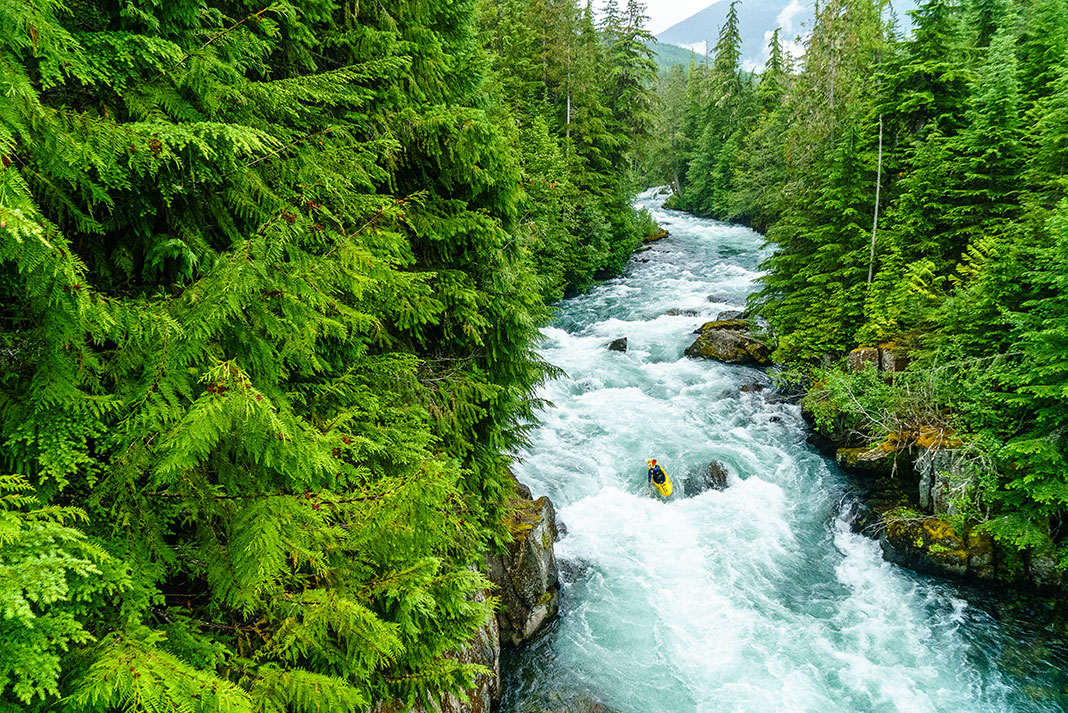Products You May Like
Creek boats have come a long way since 1973, when Tom and Jamie McEwan attempted the first descent of North Carolina’s Linville Gorge in fiberglass slalom boats. Plastic kayaks first hit the market around the same time. But it wasn’t until 1986 that the Perception Dancer really kicked off the revolution and changed the course of kayaking.
Since then, whitewater boats have gone through all sorts of permutations. The modern creek boat emerged in the mid-1990s. Creek boats got short for a time; now they’re getting longer again. They went from round displacement hulls to flat-bottomed planing hulls and then got rounder again. And what they’re used for has changed, too. Creek boats aren’t just for hair boaters anymore. Now they are paddled by boaters of all skill levels on all types of rivers. So, what is a creek boat these days? And is a creek boat right for you? Probably, yes. Read on to find out for sure.
Creek boat buyer’s guide
Creekers for all
Creek boats generally make challenging whitewater more manageable, and that’s true whether you’re crushing class V or a beginner looking to step up to class III.
The term creek boat is an allusion to creeking—paddling steep, low-volume whitewater. Modern creek boats typically have high-volume designs, displacement hulls and rounded ends to charge downriver and not get hung up in or on river features on the way. The stability and predictability of this category also make creek boats a top choice for some paddlers on difficult, high-volume whitewater. Those same attributes are also valuable for helping beginner and intermediate paddlers feel confident and step up their game. Finally, a creek boat’s higher volume and relatively larger size also make it an ideal kayak for carrying gear on multiday river trips.

Creekboats defined
One of the most common questions new paddlers ask is, “What’s the difference between a playboat, river runner and creek boat?” Playboats are short, low volume and designed for surfing, freestyle moves and play in place.
River runners form an increasingly blurry category situated between playboats and creek boats. Some river runners, like Jackson’s Antix, are more similar to playboats but have more rocker and length for better capability on downriver runs. Others, like the LiquidLogic Braaap, share a lot in common with creek boats but have a specific design element, like a slicey stern, encouraging play on river features. Speed and playability are two features prioritized in current river runner design trends.
Most major whitewater kayak brands manufacture one or more creek boat models. There are differences in boat design when comparing models, but the basics of the modern creek boat are consistent enough to be lumped together. They’re typically eight to nine feet long, high volume with lots of rocker, and designed for downriver efficiency.
The primary design elements differentiating creek boat models from each another are rocker profile, amount and distribution of volume, and hull shape.
You might be familiar with the concept of rocker profile. If you are looking at a boat from the side, its rocker profile defines where and how much the stern and bow rise. A boat with a large, continuous rocker profile would be shaped like a banana. In practice, rocker is distributed unevenly throughout a boat’s profile. The distribution and amount of rocker are important characteristics helping determine the speed, maneuverability and other performance aspects of the kayak.
Many of today’s creek boats have embraced an aggressive amount of bow rocker. According to long-time Liquidlogic Kayaks designer Shane Benedict, “The trend right now is rocker. All the new boats have lots of rocker.” More bow rocker makes boofing easier and keeps the paddler drier and moving faster through waves. But more bow rocker shortens the waterline reducing the boat’s overall speed.
The cross-sectional side-to-side shape of the hull also affects performance. Most modern creek boats feature displacement hulls. The round bottom of displacement hulls slide off rocks more easily and are usually more forgiving.
Hybridization with a flat bottom planing hull is becoming more common. Planing hulls are relatively flat laterally and have more defined edges. Planing hulls can turn more sharply but are also more susceptible to catching an edge, whether on an unexpected current or a rock.
Many of today’s creek boats feature a high-rocker displacement-style bow paired with a planing-style stern with hard chines and an abrupt change in stern rocker that Benedict calls “stern kick rocker.” Each manufacturer’s rendition of this style varies and paddles differently.

Volume is the third characteristic feature of creek boats. A high-volume kayak will quickly resurface. The high-volume bow and stern typical of creek boats reduce the chances of either end submerging. Creek boats will be more forgiving when the paddler is in the lower end of the weight range. When looking at the manufacturer’s optimal weight range, don’t forget to account for the added weight of gear, especially if using the kayak for multiday missions.
What’s inside
Most creek boats, like the rest of whitewater kayaks, are made from rotomolded high-density polyethylene. Polyethylene is a resilient plastic suited for the abuse creek boats suffer on river rocks. To make the kayak, plastic pellets are poured into a hollow metal mold and then heated and rotated in a massive oven to distribute the now-molten plastic throughout the mold. The trick is to get the right amount of plastic to be crazy durable but not stupid heavy. After it has cooled, the mold is removed to reveal a perfectly cast kayak requiring only light hand-finishing for outfitting and accessories.
Speaking of accessories, comfort matters. Creek boating is not like playboating at a local surf spot where you’re typically taking a few rides and then getting out for a break. If you’re paddling a creek boat, you’ll likely be in it a decent amount of time, especially on longer trips or multiday expeditions. Today’s boaters are lucky. Outfitting has never been better for comfort and safety, or more adjustable to fit as many people as quickly as possible.
If you’re considering multiday trips, it’s important to be able to pack gear into the boat easily. The boat’s outfitting contributes to this in a few ways. First, some creek boats allow you to remove the bulkhead easily and pack gear in front of it. This is a great feature, but it’s not a dealbreaker—many people self-support without packing gear in front.
Access behind the seat varies from boat to boat, too. While it’s good enough in virtually all creek boats, some models and designs will be easier to work with. Ultimately, it depends on the hardware at the back of the seat, and the space between the seat and the top of the hull behind the cockpit. Either test your gear to see if it will fit or be prepared to change your packing list and system to suit your new boat.
No kayak outfitting is more robust than creek boat outfitting. Things we’ve learned about durability and safety have been filtering down into river runners.
In terms of safety, modern creek boats from reputable brands come with two bow and three stern grab handles. Most are metal, reinforced, angled and shaped to clip into easily. Safety step-out pillars are a reasonably new idea replacing minicell foam pillars in the bow. Two things here: The boat is less likely to crush and trap your legs; and, if pinned, you can step on them and step out of the boat.
Creek boats have bulkheads, not foot pegs. It’s a good practice to cover the bulkhead with minicell foam to cushion your ankles from impact and prevent your feet from slipping past the edges of the bulkhead and getting trapped. Some kayaks ship with this pre-installed foam, other manufacturers provide adjustable foam blocks to glue to your bulkhead. Dagger’s bulkheads, for example, can be adjusted to fit the hull’s shape and come with pre-marked foam pads. If your boat doesn’t come with foam on the bulkhead, consider buying some and adding it yourself.

Used creek boat buying tips
Kayaks can last decades, so there’s no reason not to consider buying used. That said, used kayaks come in all sorts of conditions. Of course, you want to be sure you’re paying a reasonable price for the number of days you’re likely to get out of the boat.
Try to ascertain how much the person selling the boat has paddled it and on what kind of whitewater. If you’re buying a pro paddler’s year-old creek boat, the odds are good they’ve used and abused it and even if it isn’t cracked, it might be close. When I lived on the East Coast, paddling 150 to 200 days a year, I would break about one boat a year, regardless of brand. If a boat has been paddled consistently on hard, lower volume whitewater, odds are it’s near its breaking point.
You can also assess this by looking at the boat. Is there oil canning, an indentation under the seat? Is the hull heavily worn? Is the outfitting torn, worn and falling apart? Are there any major dents in the boat or any other evidence of a catastrophic piton? Look closely at any areas around dents that might harbor a small crack.
Old boats lose strength over time, especially if stored in the sun. Even if a boat hasn’t paddled extensively, its age could be an issue, so ask when it was originally purchased and where it’s been stored. A popular design could have been in production for 10 years. A well-used boat isn’t necessarily a “don’t buy”—it’s just a question of price and value.
Lastly, when you buy one, make sure to check that all the grab loops are securely attached. In the event of a pin, it could be a lifesaver. And while you’re at it, as you’re setting up your outfitting, be sure to tighten all your seat bolts.
Top mistake when buying a creeker
You can do all the research about rocker profile, volume and hull shape. You can read the reviews in this magazine. You can watch all the trending videos on YouTube. But each creek boat model will perform slightly differently on different types of whitewater. For example: Sharp edges can be less forgiving in rocky whitewater; aggressive rocker can make it harder to hold a line but much easier to boof; and a longer, bigger boat might be faster and more stable but may feel less maneuverable in low-volume, tight, technical whitewater.
The best way to tell what boat is right for you is to paddle it. The biggest mistake is buying a creek boat without paddling it. “Figure out how you can get into a boat, ideally on the section of whitewater you run most often,” says Canadian pro paddler Ben Marr. He adds that it’s all about the feel of the boat and finding something suitable and fun for you on the whitewater you want to paddle.
Not all paddlers have a quiver of kayaks to choose from, so whatever you purchase, make sure it’s a kayak that makes you want to paddle more.
This article was first published in the Early Summer 2022 issue of Paddling Magazine. Subscribe to Paddling Magazine’s print and digital editions, or browse the archives.
Warning: Creek boating is addictive. Paddlers may experience emotional highs after exposure. | Feature photo: Nick Gottlieb
